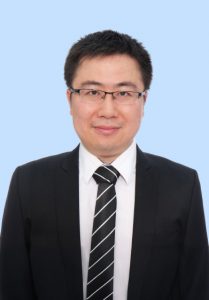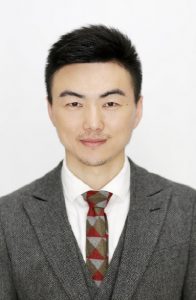In today’s challenging economic climate, innovation and technological advancement have become essential for driving new quality productive forces. The University of Macau (UM) is at the forefront of this effort, leveraging its role as a think tank to make meaningful contributions. Through its Centre for the Guangdong-Hong Kong-Macao Greater Bay Area Studies, UM conducts empirical research on Macao and regional development. It also supports Macao’s economic restructuring and policy-making efforts through the Asia-Pacific Academy of Economics and Management (APAEM) and the Centre for Macau Studies. At the same time, guided by the United Nations Sustainable Development Goals (SDGs), UM promotes sustainable economic growth by developing innovative building materials and improving infrastructure.
Driving Industry Transformation Through Smart Tourism Research
As a world centre for tourism and leisure, Macao’s ability to transform and upgrade its tourism industry is crucial to maintaining its competitiveness, driving economic growth, and creating high-quality employment opportunities. These efforts align directly with SDG8 (Decent Work and Economic Growth). From 2020 to 2024, UM’s research publications on this goal focused on the sustainable development of the tourism industry. By integrating economic growth theories, income distribution frameworks, and endogenous growth models, these studies provided valuable theoretical insights to support Macao’s economic diversification.
At the forefront of this initiative is Rob Law, UM Development Foundation Chair Professor of Smart Tourism, deputy director of APAEM, and chair professor in the Faculty of Business Administration. Under Prof Law’s leadership, UM’s smart tourism research team draws on perspectives from a wide range of disciplines, including information technology, management, social sciences, humanities and history, to conduct cross-disciplinary research that supports Macao’s ‘tourism+’ strategy.
According to a study published in Tourism Tribune that evaluated the influence of Chinese institutions in tourism studies based on SSCI-indexed tourism papers published from 2001 to 2023, UM ranked third in China with a score of 148.72. In a separate ranking from the same study that assessed research quality and cumulative research contribution, UM ranked fourth nationwide, achieving an h-index (research quality) of 34 and a g-index (cumulative research contribution) of 53, highlighting the university’s strong academic influence. Prof Law, who ranked first nationwide among individual researchers in both the h-index and g-index, emphasises that interdisciplinary collaboration is key to advancing smart tourism. His research has significant practical implications for tourism development, safeguarding tourists’ rights, and addressing the needs of specific customer groups.
One notable example of Prof Law’s work is the article Impacts of Mobile Payment-Related Attributes on Consumers’ Repurchase Intention. Based on the website evaluation conceptual model and the theory of planned behaviour, the study introduces a new framework for analysing factors that influence consumer satisfaction. Published in International Journal of Tourism Research, the paper was selected by leading international publisher Wiley as a ‘Top Cited Article 2022-2023’. The paper’s findings offer actionable insights for tourism operators seeking to optimise hotel booking processes. Prof Law notes, ‘We are also conducting research on topics such as smart medical tourism, guided tours of historical buildings using smart technology, personalised travel planning robots, and social media-based destination prediction. Through interdisciplinary efforts, we hope to provide fresh perspectives for diversifying the tourism industry.’
In addition to initiating visionary and practical academic research, APAEM serves as a platform for fostering collaboration between academia and industry. For example, the ‘Smart Tourism Symposium 2025: Intersection of Technology and Applications’ brought together international and local experts to explore cutting-edge smart tourism technologies and emerging trends. Topics included artificial intelligence (AI), big data analytics, augmented reality, virtual reality (VR), sentiment analysis, and facial recognition payment systems. The symposium not only showcased the latest advancements in intelligent and personalised tourism services but also bridged Macao’s academic research with global industry practices, offering valuable insights for the Macao government and the tourism industry to support industry transformation.
These initiatives also play an important role in expanding students’ perspectives. UM curriculum integrates research findings on smart tourism technologies, such as AI-based planning tools and VR tour guides, as well as sustainable tourism and cross-cultural communication. This equips students with a diverse skill set, including proficiency in digital tools and modern service concepts. In doing so, UM nurtures interdisciplinary talent with both technical expertise and humanistic qualities, preparing graduates for high-quality employment opportunities.
The research team also focuses on improving tourism demand forecasting and resolving data mismatches in the process. By refining forecasting methods and integrating diverse data sources, their work provides tourism practitioners and policymakers with reliable, evidence-based insights. This supports sustainable business decisions, destination planning, and the development of green supply chains, and also contributes to SDG12 (Responsible Consumption and Production).
Reshaping Modern Industry With Nanomaterials
Developing high-quality, reliable, sustainable, and resilient infrastructure is a key component of SDG9 (Industry, Innovation, and Infrastructure). Achieving this goal requires innovative building materials. To support this effort, UM has established the Zhuhai UM Science & Technology Research Institute, the UM Advanced Research Institute in Hengqin, and several research and development centres specialising in areas such as microelectronics, biomedicine, smart cities, and advanced materials. These institutes collaborate closely with businesses to align fundamental research with industry needs, creating an ecosystem that integrates ‘platform development, enterprise incubation, and result commercialisation’. This collaborative approach delivers practical solutions to drive reform and technological progress.
A research team led by Sun Guoxing, associate professor in the Institute of Applied Physics and Materials Engineering (IAPME), has developed the world’s first nanoparticle-stabilised foam concrete, marking significant breakthroughs in efficiency, energy savings, affordability, stability, and safety. This groundbreaking innovation earned third prize in the Technical Invention Award category at the 2022 Macao Science and Technology Awards. The nano-foam concrete stabilises its structure by aggregating nanoparticles at the boundaries of bubbles. When mixed with cement slurry, it produces nano-foam concrete with significantly smaller pores than conventional products, making it ideal for both manufacturing building materials and large-scale cast-in-place projects.
Quality tests conducted by a construction engineering quality inspection centre in Zhuhai, in collaboration with an industrial partner, revealed that UM’s nano-foam concrete has a strength 1.2 to 1.5 times greater than the design standard. At the same strength level, its dry density is 1 to 3 grades better than the national standard, making it considerably lighter. The material also offers impressive advantages: it uses 15% to 40% less raw material compared to similar products on the market, while its thermal insulation performance is 20% to 25% higher. In addition, the nanoparticle-stabilised foam is fire-resistant, non-toxic, and can be manufactured into fire-fighting foam. These features make the foam cement a practical solution for reducing material and energy consumption in commercial and residential applications, such as heating and cooling, while also enhancing disaster protection.
The foam concrete has been applied across a wide range of uses, including lightweight wall panels, door cores, roofing, cushion insulation, backfilling, bathroom sedimentation tanks, and large-scale cast-in-place road and bridge projects. It has been successfully used in various projects in the Chinese mainland, such as the backfilling of building foundations in the Zhuhai Hi-Tech Zone, the transport hub at the Hengqin Port, and the Xiangyang East-West Axis Road Project. Locally, it has been used in the Macau Bridge, New Town Area A Public Housing, and the Hengqin Port. Internationally, the material has been adopted in projects in Ghana in Africa. By October 2025, the total volume of foam concrete applied had reached 70,000 cubic metres, saving 12,000 tons of cement and reducing carbon emissions by over 10,000 tons, making it a leading example of sustainable infrastructure material.
Prof Sun and his team are currently working on improving the water resistance of the foam concrete, aiming to expand its application in coastal roadbeds and undersea tunnel projects. Prof Sun explains, ‘The material has passed laboratory water resistance tests and is now undergoing on-site testing in Macao through collaborative projects with industry partners. If the trials are successful, the material will not only contribute to carbon reduction and environmental protection but also significantly enhance the structural safety of tunnels.’
Meanwhile, Assistant Professor Chen Binmeng, also from IAPME, is leading a team in developing a novel carbon dioxide–based method that uses in-situ carbonated construction waste to synthesise new nanomaterials. The process transforms the waste materials into nanomaterials with different structures, which can then be modified and reused. This approach represents a breakthrough in the recycling of building materials and directly supports SDG12 (Responsible Consumption and Production).
The in-situ carbonation process involves using carbon dioxide to break down the hydration products in concrete, enabling their reuse. This method not only safely reduces the carbon footprint of waste disposal, but also utilises carbon dioxide in the reaction, resulting in zero emissions. Furthermore, the nanomaterials produced during this process can be modified and used for gas absorption (such as capturing carbon dioxide and sulfur dioxide). Prof Chen has further refined the synthesis method to create nanomaterials with a variety of structures, including porous, layered, and core-shell configurations, which expands their potential applications. ‘Core-shell nanomaterials can carbonate concrete, improving the durability of building materials,’ Prof Chen explains. ‘Layered structures, on the other hand, can absorb harmful ions, such as phosphate ions, in wastewater, contributing to wastewater treatment. By following this approach, concrete doped with these nanomaterials could even have the potential to achieve self-recycling.’
According to Prof Chen, the team’s research findings have been published in internationally renowned journals, including Nature Communications, Cement and Concrete Research, Composites Part B: Engineering, and Cement and Concrete Composites, offering pioneering insights into related research fields.
As a leading institution for higher education and research, UM plays a vital role in driving economic diversification and sustainable development in Macao and the Greater Bay Area. Through innovative cutting-edge interdisciplinary research and strong industry-academia collaboration, the university is making meaningful real-world impact. From systematically advancing smart tourism to developing revolutionary green building materials, UM has not only achieved significant academic recognition but also delivered tangible benefits across various industries. Looking ahead, it will further enhance its research and development platforms and incubation mechanisms on its campus in the Guangdong-Macao In-Depth Cooperation Zone in Hengqin, providing momentum for industrial innovation and structural upgrades in both Guangdong and Macao.
Text: Stella Kuan
Photo: Editorial board, with some provided by the interviewees
English Translation: Bess Che
Source: UMagazine Issue 32
Related articles:
Leveraging Innovative Technologies to Advance Ecological Sustainability


Prof Rob Law

UM APAEM offers valuable insights for the Macao government and the tourism industry through organising international symposiums

Prof Sun Guoxing

Nano-foam concrete has been applied across a wide range of uses nationwide

Prof Chen Binmeng
和殼核結構(右)的納米材料可分別應用於不同場景--300x144.jpg)
Porous nanomaterials (left) and core-shell nanomaterials (right) are suited for different applications
